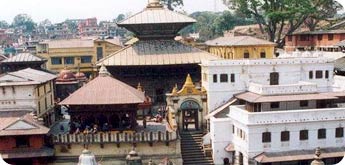places to see
Kathmandu Places to See

The Sights and Sounds of Kathmandu Valley with its three fabled cities Yen ( Kathmandu ), Yala ( Patan) and khopa ( Bhaktapur) and seven UNESCO World Heritage Sites. Once a big lake, the valley was created by a Buddhist saint Manjushree by draining out the water. The valley's civilization over the centuries can be seen at A couple of palaces, temples and traditional art of culture and it is protected as the Heritage Site in the social, religious and urban focal point of the city. It is called as Hanuman Dhoka. The site guarded by God Hanuman, the temple-resident of Kumari (Living Goddes) as Kasthamandap, after which the word Kathmandu is named.
Kathmandu Durbar Square
This one of the most popular tourist destination is enlisted in World Heritage Sites. Clustered around the central Durbar Square are the old Royal Palace (Hanuman Dhoka), numerous interesting temples, the Kumari Chowk or Kumari Bahal (House of the Living Goddess) and the Kasthamandap (House of Wood) from which Kathmandu derived its present name. An inquisitive exploration in the Durbar Square reveals the ancient art and architecture of Nepal which has proved to be a masterpiece to everyone accepting its genuineness.
Temple of Kumari
The temple and the holy quadrangle with a Buddhist stupa at the center form the residential quarters of the Chaste Virgin Living Goddess called KUMARI. The traditional building has profusely carved wooden balconies and window screens. The non-Buddhist and the non-Hindu visitors may enter the courtyard called the 'bahal' but may not proceed beyond upstairs. The KUMARI acknowledges their greetings from the central window of the balcony particularly saved for Her alone and snapshot is strictly prohibited.
Kastha Mandap
Located nearby the Temple of Kumari, this is a unique type of wooden temple also known as Maru Satal. It was built in 1596 A.D. by King Laxmi Narsingh Malla. They say the timber used for its relevant construction was sawed out of a single tree. It is also believed that the capital of Kathmandu derived its new name from this very 'Kastha Mandap.' Today it houses the Hindu God namely Gorakh-Nath.
Pashupatinath Temple
Pashupatinath is the holiest Hindu pilgrimage destination in Nepal.There are linga images of Shiva a long with the statues,shrine and temples dedicated to other deities in the complex.A temple dedicated to Shiva existed at this site in 879AD.However the present temple buil by King Bhupatindra malla in 1697AD.A gold plated roff,silver doors and woodcarvings of the finest quality decorate the Pagoda construction.There are rows of Shiva shrines and Hindu pilgrims from all over south Asia offering( Puja)worship to Shiva tile of lord of destruction.The Bagmati rivers follows close by and the Arya Ghat cremation grounds are there
Swayambhunath Stupa
An impressive Buddhist Stupa, the oldest shrine of Kathmandu valley often called Monkey Temple, visitors not only get a good view of the valley but come face to face with temples resident monkeys. Painted on four sides of the spire are the all-seeing eyes of Lord Buddha.
Boudhanath
Possibly the world�s largest Stupa. Is a site of a great veneration for Himalayan Buddhism. Being on the old Tibet Nepal trading route and many Tibetans living around the area has developed many monasteries of the different scats of Tibetan Buddhism. Walking around the Stupa will give you a little glimse of Tibet
Changunarayan
This is the most ancient temple of Kathmandu valley.The temple built third century is decorated by some of the best samples of stones,,wood and metal crafts in the valley.A fifth century stone inscription, the oldest to be discovered in Nepal, is located in the temple compound and it tells of the victorious King Mandev.






